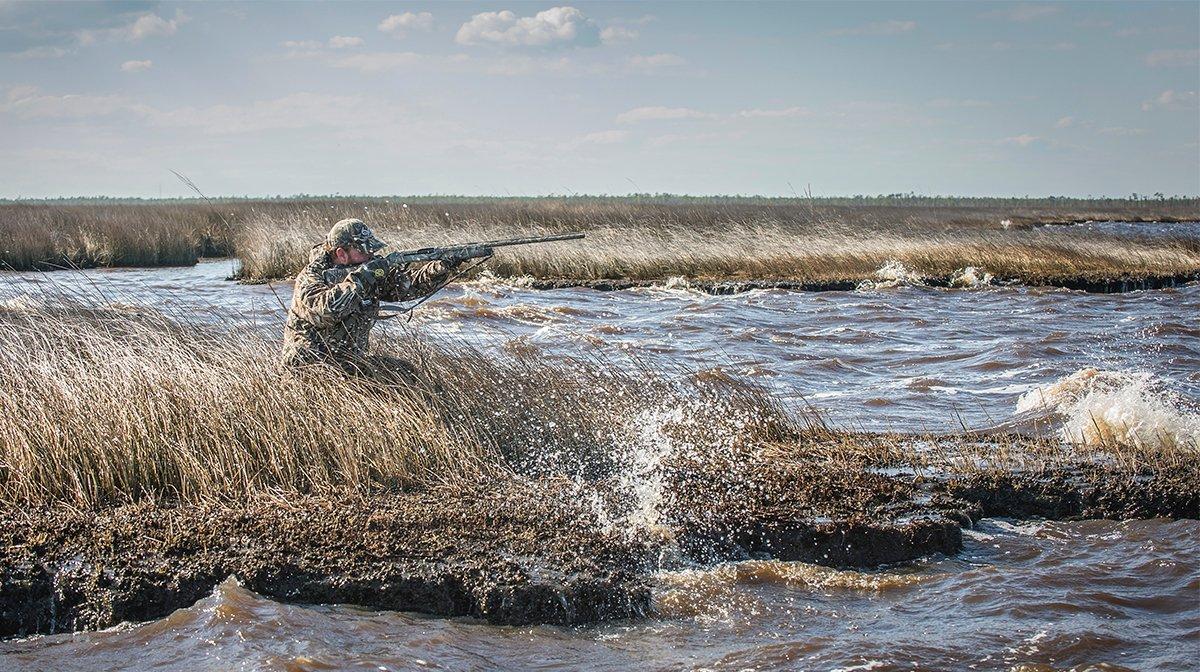We crave big blows and shun calm days, but what's the happy medium?
Duck hunters often gripe about flat-calm days, when most birds are content to loaf on the water and those that move won't finish. But too much wind can actually hinder hunting efforts, making travel, setups and shooting difficult.
That raises an obvious question: How much wind do duck hunters need to be successful? That answer is, it depends.
Generally, winds lighter than 6 or 7 mph hamper success, especially when hunting over water. Decoys sitting atop placid water look like … well, decoys, and ducks and geese immediately become suspicious of those unrealistic setups. Further, light winds won't stir up much waterfowl movement, even on big water. And still conditions almost eliminate any aerodynamic incentive for birds to approach or finish into the wind, so they might buzz your spread from any direction. On those calmer days, you're better off setting up with the sun at your back than to worry too much about the wind direction. Wind isn't as critical for field hunting, especially if you're on the X, but ducks and geese still finish better when there's a distinct breeze. Your spread will look more realistic in the wind if you use socks, rags or motion-stake decoys, too.
A 10- to 15-mph wind might be the best overall, since it's enough to spur bird movement and make decoys come alive, but still allow for safe boat travel and relatively easy setup. If I had the time and energy to comb through journals from the past 40 seasons, I'm sure they'd reveal that most of my successful hunts occurred when the wind blew at those speeds. That includes early-season puddler shoots, big-water diver hunts, prairie free-lancing adventures and frigid late-season honker setups.
If I had the time and energy to comb through journals from the past 40 seasons, I'm sure they'd reveal that most of my successful hunts occurred when the wind blew at those speeds.
Winds gusting at 15 to 25 mph — or more — create a conundrum. Extra-blustery conditions certainly move ducks and geese, often to forcing them to relocate closer to leeward shores or protected areas. Also, massive fronts associated with big winds prompt birds to feed heavily or migrate, creating sometimes epic flights. Hunters can take advantage of these situations, especially when the blow moves big-water birds closer to shoreline hides or pushes them off large lakes or sloughs and into smaller marshes or potholes. However, gusty winds can also create tough travel and setup conditions on larger waters. You can get away with motoring through a cattail-lined channel to a 50-by-50-yard pothole when the wind howls at 30 mph. Hunting the shoreline of a large lake in a crosswind that day would be difficult, though. And boat travel in the resulting whitecaps would be downright dangerous in some crafts. Further, big winds make shooting difficult, as approaching birds merely have to flick their wings to gain serious altitude and turn 20-yard decoying shots into 45-yard adventures.
Still, there's something about big winds that grabs at a duck hunter's soul. We tend to foolishly embrace tough conditions. Moreover, epic winds and the weather fronts with which they're often associated can create memorable flights, with wave after wave of birds finishing seemingly in your face. Several of my most memorable hunts have occurred in sustained winds of 35 to 50 mph. Admittedly, two of the most dangerous episodes I've experienced — one in which a friend and I almost wrecked our boat, and the other when the same friend and I almost died — occurred in similarly windy conditions. Take advantage of ultra-windy days, but only with the right equipment and in safe situations.
So, circling back to the original question, how much wind is enough? Here's the bottom-line answer: Enough to get birds moving and give your decoys life, but not so much that it hinders travel, decoy setup or shooting. And depending on where you're hunting, that ideal speed can vary considerably. To find success, you must identify situations where the wind speed and direction will boost your efforts, not hamper them. Soon, you'll realize you can kill ducks and geese when flags are limp and still or when they shake and bend sideways in a gale.
Click here for more Realtree waterfowl hunting content. And check us out on Facebook.







